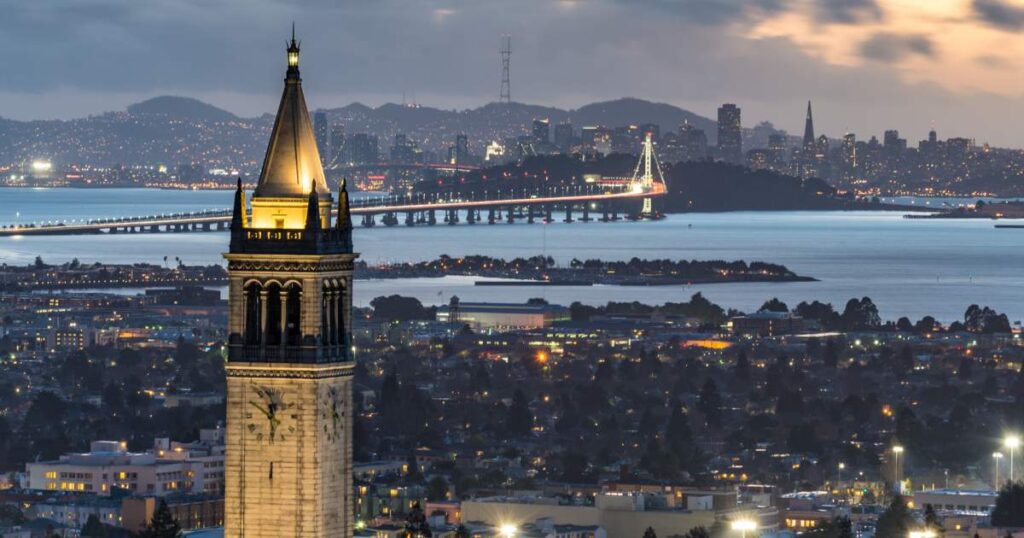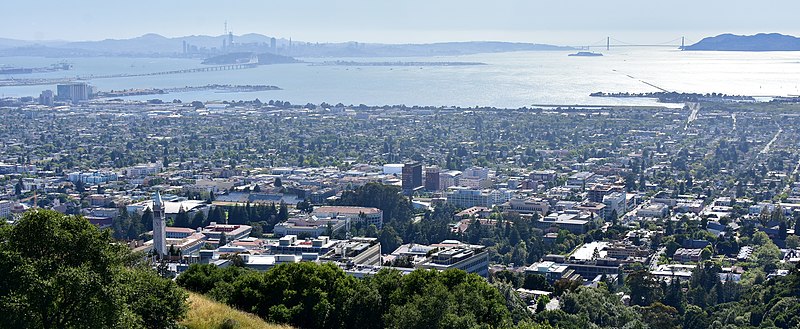Berkeley is a city on the eastern shore of San Francisco Bay in northern Alameda County, California, United States. Take a look below for 25 incredible and fun facts about Berkeley, California, United States.
1. It is named after the 18th-century Irish bishop and philosopher George Berkeley.
2. It borders the cities of Oakland and Emeryville to the south and the city of Albany and the unincorporated community of Kensington to the north.
3. Its eastern border with Contra Costa County generally follows the ridge of the Berkeley Hills. The 2020 census recorded a population of 124,321.
4. Berkeley is home to the oldest campus in the University of California system, the University of California, Berkeley, and the Lawrence Berkeley National Laboratory, which is managed and operated by the university.
5. It also has the Graduate Theological Union, one of the largest religious studies institutions in the world.
6. Berkeley is considered one of the most socially progressive cities in the United States.
7. The site of today’s City of Berkeley was the territory of the Chochenyo/Huchiun band of the Ohlone people when the first Europeans arrived.
8. Evidence of their existence in the area include pits in rock formations, which they used to grind acorns, and a shellmound, now mostly leveled and covered up, along the shoreline of San Francisco Bay at the mouth of Strawberry Creek.
9. Other artifacts were discovered in the 1950s in the downtown area during remodeling of a commercial building, near the upper course of the creek.
10. The first people of European descent (most of whom were of mixed race and born in America) arrived with the De Anza Expedition in 1776.

11. The De Anza Expedition led to establishment of the Spanish Presidio of San Francisco at the entrance to San Francisco Bay (the Golden Gate). Luis Peralta was among the soldiers at the Presidio. For his services to the King of Spain, he was granted a vast stretch of land on the east shore of San Francisco Bay (the contra costa, “opposite shore”) for a ranch, including that portion that now comprises the City of Berkeley.
12. Luis Peralta named his holding “Rancho San Antonio”. The primary activity of the ranch was raising cattle for meat and hides, but hunting and farming were also pursued. Eventually, Peralta gave portions of the ranch to each of his four sons.
13. What is now Berkeley lies mostly in the portion that went to Peralta’s son Domingo, with a little in the portion that went to another son, Vicente. No artifact survives of the Domingo or Vicente ranches, but their names survive in Berkeley street names (Vicente, Domingo, and Peralta). However, legal title to all land in the City of Berkeley remains based on the original Peralta land grant.
14. The Peraltas’ Rancho San Antonio continued after Alta California passed from Spanish to Mexican sovereignty after the Mexican War of Independence. However, the advent of U.S. sovereignty after the Mexican–American War, and especially, the Gold Rush, saw the Peraltas’ lands quickly encroached on by squatters and diminished by dubious legal proceedings.
15. The lands of the brothers Domingo and Vicente were quickly reduced to reservations close to their respective ranch homes. The rest of the land was surveyed and parceled out to various American claimants.
16. Politically, the area that became Berkeley was initially part of a vast Contra Costa County. On March 25, 1853, Alameda County was created from a division of Contra Costa County, as well as from a small portion of Santa Clara County.
17. The area that became Berkeley was then the northern part of the “Oakland Township” subdivision of Alameda County. During this period, “Berkeley” was mostly a mix of open land, farms, and ranches, with a small, though busy, wharf by the bay.
18. In 1866, Oakland’s private College of California looked for a new site. It settled on a location north of Oakland along the foot of the Contra Costa Range (later called the Berkeley Hills) astride Strawberry Creek, at an elevation of about 500 feet (150 m) above the bay, commanding a view of the Bay Area and the Pacific Ocean through the Golden Gate.
19. According to the Centennial Record of the University of California, “In 1866…at Founders’ Rock, a group of College of California men watched two ships standing out to sea through the Golden Gate. One of them, Frederick Billings, thought of the lines of the Anglo-Irish Anglican Bishop George Berkeley, ‘westward the course of empire takes its way,’ and suggested that the town and college site be named for the eighteenth-century Anglo-Irish philosopher.”
20. The philosopher’s name is pronounced BARK-lee, but the city’s name, to accommodate American English, is pronounced BERK-lee.

21. The College of California’s College Homestead Association planned to raise funds for the new campus by selling off adjacent parcels of land. To this end, they laid out a plat and street grid that became the basis of Berkeley’s modern street plan.
22. Their plans fell far short of their desires, and they began a collaboration with the State of California that culminated in 1868 with the creation of the public University of California.
23. As construction began on the new site, more residences were constructed in the vicinity of the new campus. At the same time, a settlement of residences, saloons, and various industries grew around the wharf area called “Ocean View”. A horsecar ran from Temescal in Oakland to the university campus along what is now Telegraph Avenue. The first post office opened in 1872.
24. By the 1870s, the Transcontinental Railroad reached its terminus in Oakland. In 1876, a branch line of the Central Pacific Railroad, the Berkeley Branch Railroad, was laid from a junction with the mainline called Shellmound (now a part of Emeryville) into what is now downtown Berkeley.
25. That same year, the mainline of the transcontinental railroad into Oakland was re-routed, putting the right-of-way along the bay shore through Ocean View.




